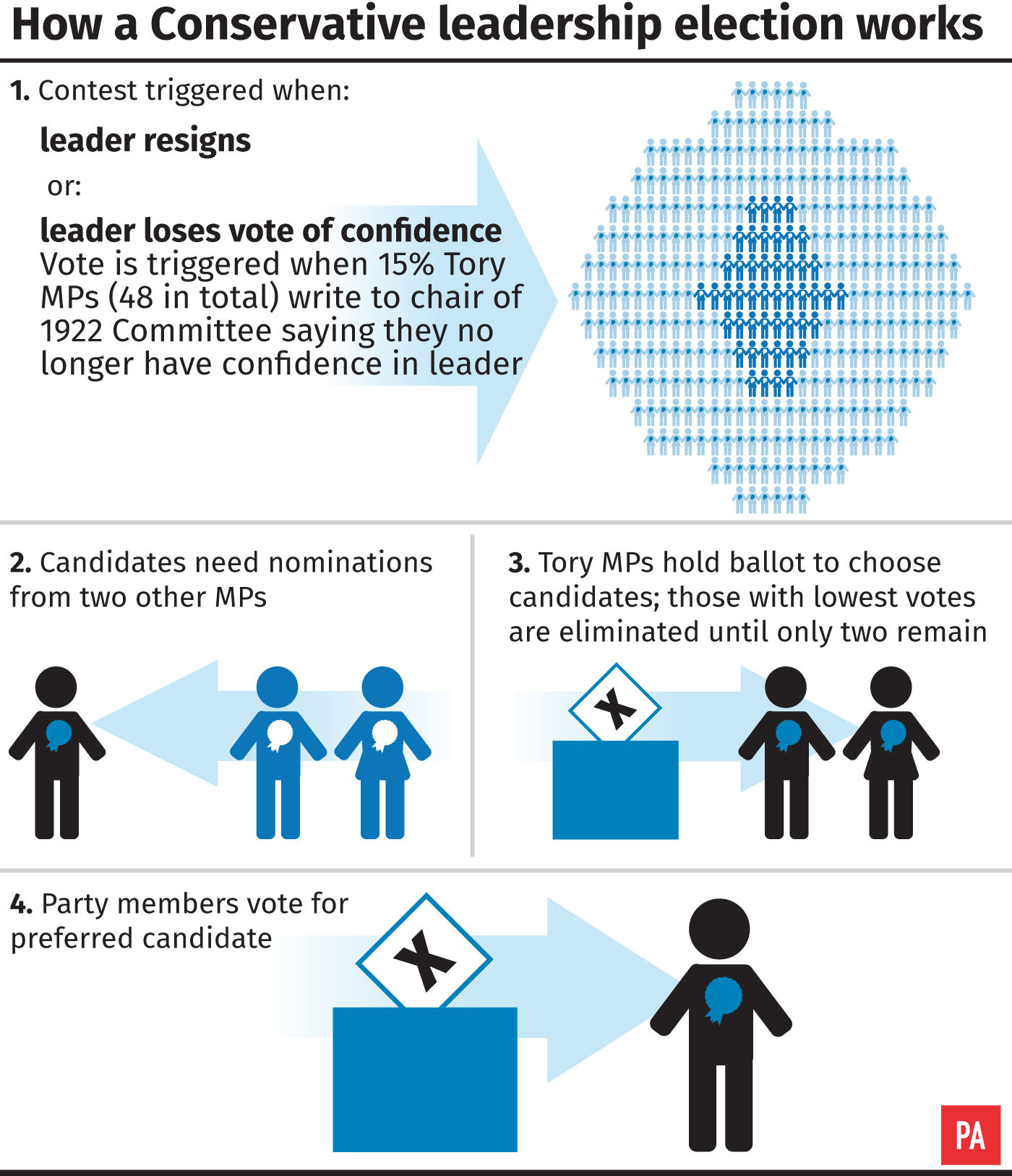A flurry of Tory MPs – including European Research Group chairman Jacob Rees-Mogg – have said they have lost confidence in Theresa May.
Here’s how a Tory leadership contest could unfold:
How would it begin?
To trigger a vote of no confidence, 15% of Tory MPs – 48 in total – must write to the chairman of the Conservative backbench 1922 Committee, Sir Graham Brady.
 Jacob Rees-Mogg has submitted a letter saying he has no confidence in the Prime Minister (Stefan Rousseau/PA)
Jacob Rees-Mogg has submitted a letter saying he has no confidence in the Prime Minister (Stefan Rousseau/PA)How many have sent letters so far?
It is impossible to say for certain, as Sir Graham keeps the actual number a closely guarded secret. But ERG MPs believe it to be very close to the 48 required. Mr Rees-Mogg said that he believed the necessary letters would be submitted, but declined to put a time frame on the process.
What if they do reach the 15% threshold?
A vote would be held among Tory MPs. Mrs May would need the support of more than 50% of the 315 Conservative MPs to stay in office. But even if she wins, if the margin of victory is small her authority may have been fatally wounded.
What if she loses?
If the PM lost the vote, she would not be able to stand in the subsequent leadership contest arranged by Sir Graham.
 (PA Graphics)
(PA Graphics)How would that work?
Candidates for the leadership must be nominated by two Conservative MPs. If only one candidate comes forward, he or she becomes leader.
If a number of would-be leaders are nominated, the list is whittled down to a shortlist of two in a series of votes by MPs.
The final pair then go to a postal ballot of all party members, with the position of leader going to the victor.
How long would that take?
Sir Graham would be responsible for overseeing the contest and setting a timetable for the campaign, which would be expected to last around 12 weeks – although those calling for Mrs May to go believe it could be accomplished much quicker.
Mrs May could remain in post during the campaign period.
 Sir Graham Brady, chairman of the Tory 1922 Committee (Dominic Lipinski/PA)
Sir Graham Brady, chairman of the Tory 1922 Committee (Dominic Lipinski/PA)The 1922 Committee seems to have a key role, what exactly is it?
Widely known in Westminster as “the ’22”, the committee of all backbench Conservative MPs meets weekly when the House of Commons is sitting.
Where does the unusual name come from?
The committee takes its name from a meeting of Conservative MPs on October 19 1922. The MPs successfully ended the party’s coalition with the Liberals, bringing down the government of David Lloyd George. The resulting general election was won by the Tories.


